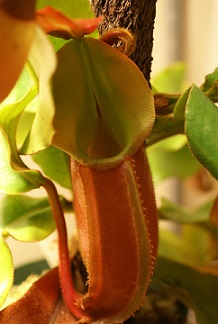Top 10 Most Dangerous Plants in the World
When you think about common garden plants or peaceful trees fluttering their leaves in the wind, the last word that might come up will be deadly. In reality though, predators are seen not only among the fauna of our planet. Unexpectedly, a lot of the flora’s specimens are equally famous for their rapacious appetites for blood. They too have numerous elaborate techniques for catching a pray in most sufficient ways; they have hunting strategies and murder weapons. So let’s dive in into this peculiar world of deadly plants and their eating habits. Be prepared for surprises, including not very pleasant ones.
1. Belladonna
Although the name of this plant is translated as Beautiful Lady from Italian, do not let this elegant allegory misguide you. This is one of the most poisonous plants on our planet! Often mistaken for a wild cherry, if slightly over 10 berries are ingested, the fatal outcome is inevitable. Belladonna was frequently used to make a poison throughout history, specifically taking an essence from the roots of the plant; they are the most toxic part. It was also put in use as the ancient anesthetic during surgical procedures. Belladonna is known to induce delusions and delirium it attacks the nervous system causing problems with the heart’s functions and breathing.
2. Sea Mango
Also known as Cerbera Manghas, this tree can be found in coastal areas and is extremely deceptive. The fruits that look exactly like everyone’s favorite mango are indeed very toxic. Named “suicide apple” in some parts of Hawaiian Islands, it interferes with a normal heart work and could lead to the fatal consequences.
3. Sundew
Some plants are deadly to humans, but some prefer other species. Like this peculiar one, which hunts insects. Drosera, aka sundew with its tentacle-like branches that are covered with small sprouts with what looks like a drop of delicious nectar. But in reality, it is a sticky substance that helps to catch and to digest a victim. The cool thing is that these tentacles actually move when something is caught in their net. It is not hostile towards people and is used in medicine when treating cough related illnesses.

4. Nepenthes
Commonly known as tropical pitcher plants, these hunters use a different technique. Its cup-shaped trap is just waiting for the suitable victim to feed on. Mostly they consume insects and various types of rodents and other small animals. They are attracted to the plant due to the sweet smell of nectar, which is actually a very sticky fluid that disorients the prey while it is slowly digested.
5. Manchineel Tree
When you see nice greenery, it is easy to think of a nice rest under its shade-full brunches. But beware, sometimes it could cause rashes, skin irritation and even temporary blindness. That’s precisely what can happen if you touch or stand under the Manchineel Tree, which is known as the most dangerous tree in the world. Literally, every part of it is highly toxic, it even has dangerous flowers! It is found in the North and South America and the Caribbean and is often marked with a warning sign. It is no wonder on why its Spanish name manzanilla de la Muerte is translated as “little apple of death,” because tree’s fruits look like apples, but not the kind you want to eat for lunch.
6. Poison Sumac
Well, from the sole title of this plant you can tell what its main properties are. While we are wondering how difficult it was in the past to recognize all these dangerous flora specimens without the help of helpful site or a Google search, this particular one is far worse than for instance poison ivy. It leaves burns and rushes, and if burnt, the fumes can cause lung collapse.
7. Muskrat Weed
This harmless looking plant is actually one of the most poisonous herbs in the world. If ingested, symptoms usually are quick to follow and include nausea, convulsions and respiratory failure. It is also dangerous to the farm animals, because of the meat or milk of the latter is consumed, the poisonous qualities remain. This mysterious “milk disease” was an undercover Muskrat Weed operation for ages.

8. Doll’s Eyes
This pretty vividly named plant is famous for its signature berries, which resemble, you’ve guessed it, doll’s eyes. Also known as white baneberry and found mostly in North America, its fruits are highly toxic and could cause heart failure. However, in a small dosage, they are used in a production of some medicine. This time nature is warning us not to eat anything that looks like somebody’s eyes.
9. Castor Plant
Though castor oil is known for its good uses, the plant itself has quite hazardous nature. Its seeds contain a toxin called ricin that is known to provoke serious consequences when eaten. The complication is that the plant is very widespread, so it could be mixed up in various stories and do a lot of harm. The good rule is not to eat anything you are not sure of under any circumstances.

10. Bleeding Tooth Fungus
Judging by a name and a look of this plant, you definitely do not want to eat it. This mushroom usually is white with some red drops of fluid that looks like blood. While its look screams “do not touch me,” if consumed it can cause serious poisoning.
